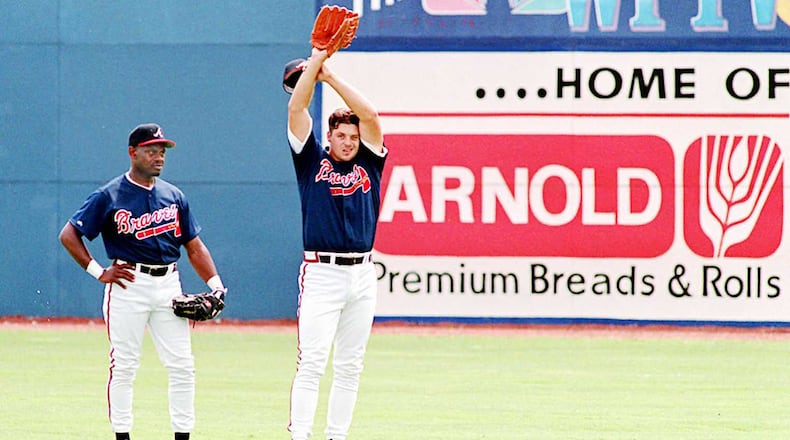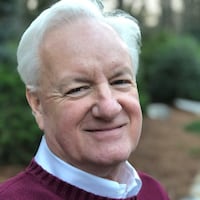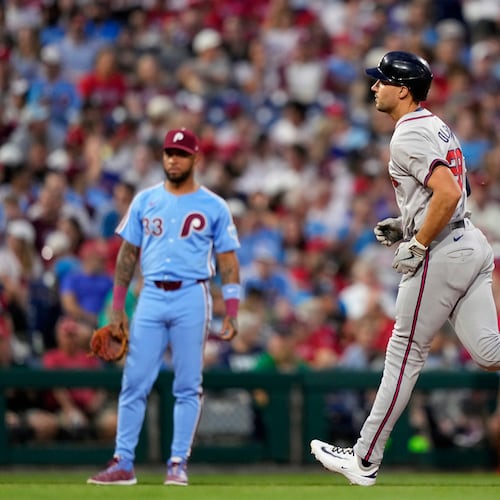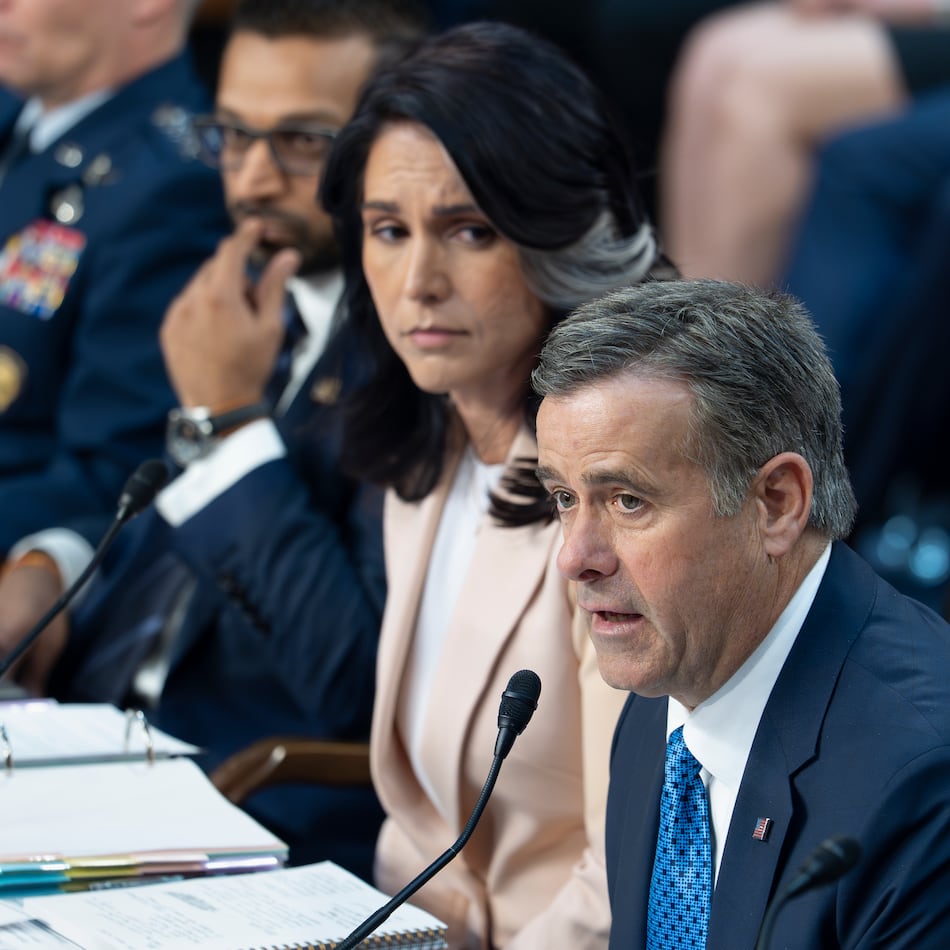Editor’s note: This is one in a series of Atlanta Journal-Constitution stories reflecting on the 25th anniversary of the 1995 World Series champion Braves. This installment focuses on the circumstances under which that season belatedly began.
Twenty-five years ago, for reasons very different than a global pandemic, the start of the Major League Baseball season was delayed.
The 1995 season – the season, yes, that culminated with the Braves winning the World Series – was pushed back 23 days as a result of a players’ strike.
That’s the last time, until 2020, an MLB season didn’t open on time.
“Chaos. It was chaos,” Chipper Jones, then a Braves rookie, now a Hall of Famer, said when asked recently what he remembers about that spring.
“It was a crazy time,” recalled Tom Glavine, then a Braves pitcher, now a Hall of Famer, “but it was a good year.”
When it was time for spring training to begin in mid-February 1995, MLB players were on strike, as they had been since Aug. 12, 1994. From that ignominious start sprang the Braves’ best season since moving to Atlanta in 1966.
The players had gone on strike over their well-founded belief the owners intended to implement a salary cap, diminish free agency and/or eliminate salary arbitration. The strike had wiped out the playoffs and, unthinkably, the World Series in 1994. By the scheduled start of spring training in February 1995, little progress had been made in rancorous negotiations.
So MLB opened camps with replacement players – some of them without any experience in pro ball, some of them former minor-leaguers, some of them former major-leaguers whose brief careers had fizzled out.
From the third week of February through the end of March, the replacement players participated in spring training workouts and exhibition games across Florida and Arizona. The team owners vowed the replacement players would be on the field for opening day and beyond if the labor dispute didn’t get resolved.
But on March 31, 1995, two days before the season was to open, a ruling by a federal judge in New York, Sonia Sotomayor, now a U.S. Supreme Court justice, effectively brought back the major league players.
“I don’t remember exactly (how I found out about Sotomayor’s ruling), but I wasn’t surprised by it,” Glavine, the Braves’ player representative to the Major League Players Association in 1995, said earlier this month. “We had been kind of advised by the Players Association all along … that ultimately this thing is going to end up in the court and be decided there.
“Being in the middle of it, I felt that was the proper ruling. Now, obviously, people on the owners’ side would tell you differently, I’m sure.”
The National Labor Relations Board had asked the judge to issue an injunction reinstating the economic conditions in place when the strike began, including the rules for free-agent negotiations and salary arbitration. The players made it clear they would be willing to return to the field if the injunction were granted. Sotomayor granted the temporary injunction a mere 15 minutes after a two-hour hearing, and upon nominating her to the Supreme Court 14 years later, President Barack Obama mentioned: “Some say that Judge Sotomayor saved baseball.”
The union called off the strike after her ruling, and the team owners opted against a lockout at that point, even though a new labor agreement hadn’t been reached. Big-league baseball was back.
“They told us we were going to have, what, two weeks (actually three) to get ready,” Jones said. “So all of a sudden it’s over and we have to be in West Palm Beach.
“It was chaotic, but it was welcomed because I didn’t have any money, and I was scrambling. Actually, I had a job on talk radio in Atlanta. Needless to say, I was ready to get my career started.”
He had missed the entire 1994 season, which would have been his rookie year, because of knee surgery.
“While the strike (delaying spring training in 1995) was a blessing in that it allowed me to be able to rehab my knee to the full extent,” Jones said, “to say I was chomping at the bit is an understatement.”
The replacement players were unceremoniously sent home after Sotomayor’s ruling, and the second version of spring training, this one with the formerly striking players, lasted until the season finally opened on April 25.
“It was a shortened spring training, which I think a lot of guys would tell you is just fine anyway,” Glavine said. “I know spring training is probably three weeks too long for the hitters, so most of it is geared toward getting your starting pitchers enough volume to go out there and be able to throw 100 pitches to start the year.
“While you were mindful of kind of being in a hurry-up mode, I think there was a tremendous amount of attention paid to guys being careful at the same time. Because that’s where guys get hurt – when you start rushing and doing things you’re not ready to do. But it was interesting.”
MLB can’t know at this point when, or even if, the 2020 season will begin, but it won’t be before mid-May at the earliest and likely later. Even after the players reconvene, a second “spring training” of sorts would be required before regular-season games could commence – maybe two or three weeks of training, based on the 1995 example.
In a recent discussion about Atlanta's only World Series-winning team, former Braves general manager John Schuerholz recalled the "weird time" of spring 1995: the dual spring training and the delayed start to that season.
“I remember the unsettled feeling we all had and the hopes we all had that we could get back to building our team with the guys we knew were ready to be winners,” Schuerholz said. “And when that time came … it was like the pall was lifted.”
When the strike ended, the Braves quickly got back to the business of baseball. On April 6, 1995, Schuerholz traded three players – outfielders Roberto Kelly and Tony Tarasco and pitching prospect Esteban Yan -- to the payroll-slashing Montreal Expos for center fielder Marquis Grissom.
“As an Expos fan, I remember that trade,” said Alex Anthopoulos, then a 17-year-old high school student in Montreal, now the Braves’ general manager. “1994, other than the strike, was such a magical year for the Expos. Then they dismantled the club.”
He still wonders what would have happened if the 1994 season had been completed; at the time the strike ended the season, the Expos had MLB’s best record and led the Braves by six games in the National League East.
“When I got the (Braves GM) job, I asked John Schuerholz, ‘Hey, do you guys think you would have won the division in ’94?’” Anthopoulos said. “He said, ‘Absolutely, would have won the division.’”
In the strike-shortened 144-game regular season of 1995, the Braves won the division by 21 games. A season that began under the cloud of a bitter labor dispute ended with Glavine pitching eight scoreless one-hit innings, David Justice hitting a home run and Grissom catching a fly ball for the final out as the Braves beat the Cleveland Indians 1-0 in World Series-clinching Game 6 at Atlanta-Fulton County Stadium.
About the Author
Keep Reading
The Latest
Featured



